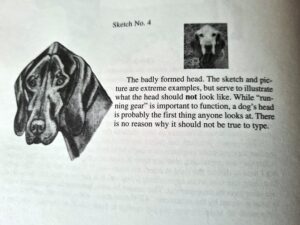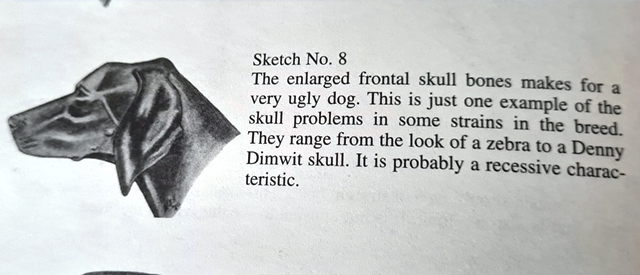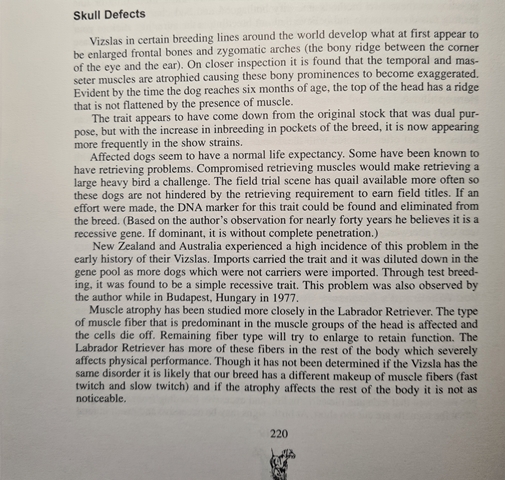For many years in our Hungarian Vizslas – in US, Australia and New Zealand particularly – there has been much speculation about “head deformities” “skull defects” “malformed skulls” or “cranial muscular atrophy”
The following illustrations appeared in a US book by Bernard Boggs – The Vizsla – 2nd revision (2000) (first published in 1973)



